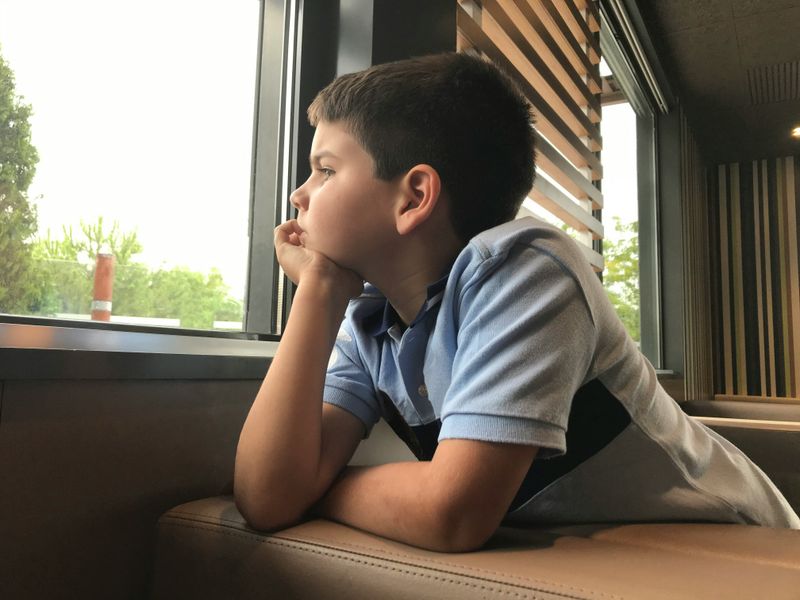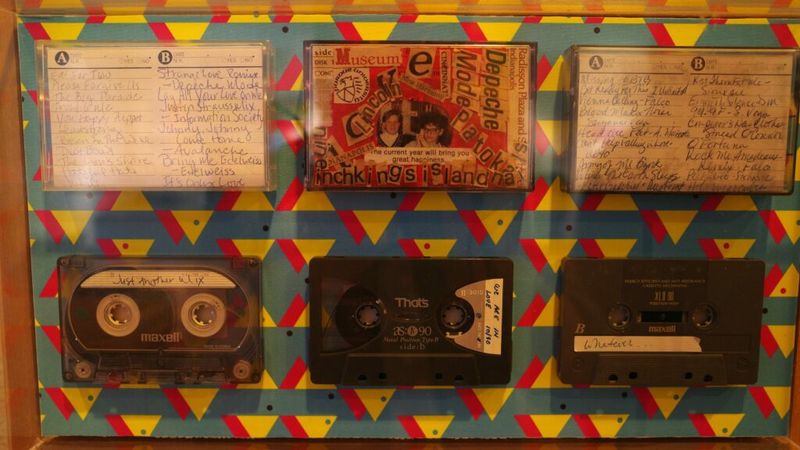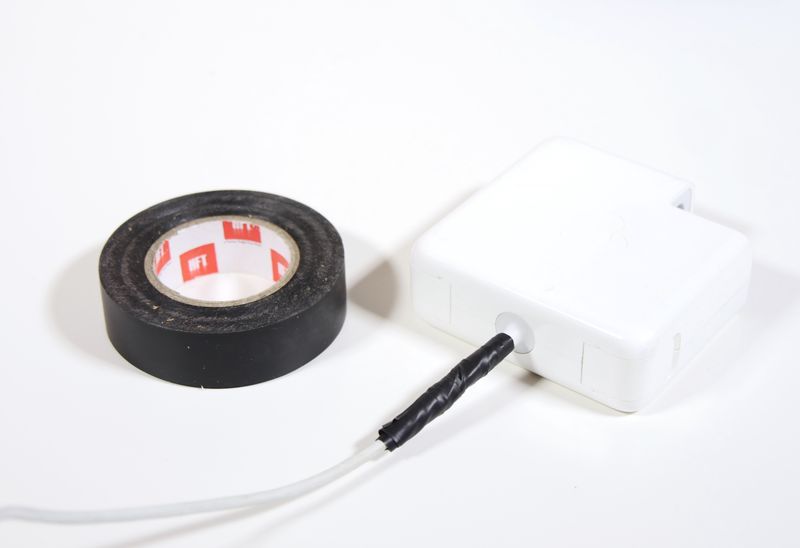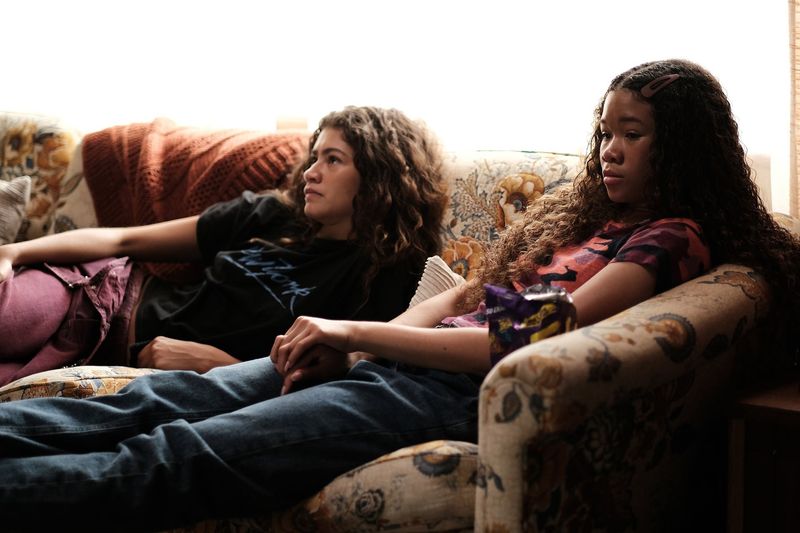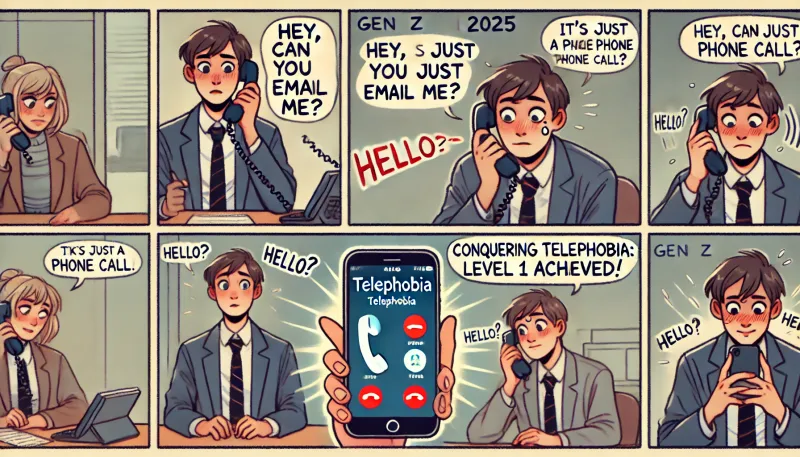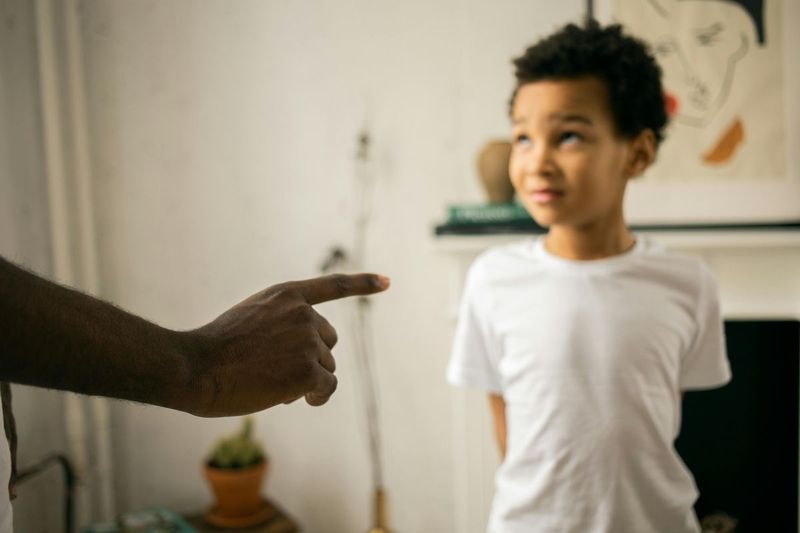Gen X had the wildest upbringing. We were raised on latchkey freedom, questionable TV shows, and a healthy dose of “you’ll be fine.” We survived secondhand smoke, Pop Rocks panic, and drinking from the garden hose.
So when it came time to raise our own kids, we were determined to do things better… right? And yet… somehow, in between helicopter-parenting and handing over iPads, we may have forgotten to teach them a few key life skills. Not judging—just saying.
Ecco 20 things Gen X kinda, sorta, maybe forgot to pass on to the next generation (with love and sarcasm, of course).
1. How to Leave a Voicemail That Doesn’t Sound Like a 911 Call
Remember when leaving a voicemail wasn’t cause for a minor existential crisis? Watching our kids fumble through a message, mumbling and stammering, almost feels like a prank on us. The pressure’s real: one beep and suddenly, every word you know exits stage left.
I once overheard my own kid say, “Uh, it’s me… yeah, so… bye?” and I almost wanted to send them a sympathy card. They can TikTok for hours but freeze when it’s their turn to leave a voicemail. Our generation could narrate a mini-life story in 30 seconds flat.
It’s almost art—the rambling, the awkward signoff, the weird panic when you realize you forgot your point. Maybe we gave up on voicemails too soon, and now the skill’s practically extinct. Sometimes I wish I’d taught them it’s okay to sound human, not perfect, when talking to the beep.
2. How to Talk to a Real-Life Human Customer Service Rep
Ever watched a Gen Z kid try to return something in person? You’d think they were being sentenced to medieval torture. The agony of speaking to an actual human is written all over their faces—nerves, confusion, and a touch of desperation.
Back in our day, you couldn’t just fire off an email and hide behind your inbox. Nope, you had to face the fluorescent lights and awkward small talk to get what you needed. It built a certain muscle—dealing with disappointment, and—gasp—asking follow-up questions.
Now, half the time our kids would rather argue with a chatbot for an hour than utter three sentences to a cashier. I sometimes wish I’d made them call for pizza or handle a return, just for the practice. It’s not their fault, but wow, it’s a lost art.
3. How to Get Lost Without a Mental Breakdown
Remember trying to find your friend’s house with nothing but scribbled directions and hope? Getting lost was just part of childhood, like mosquito bites and burnt grilled cheese. It forced us to figure things out, trust our instincts, and sometimes—gasp—ask for help from a stranger.
Our kids? Total meltdown at one wrong GPS turn. The idea of wandering without Google Maps is panic-inducing, like being stranded on Mars. I tried giving my teenager a paper map once; you’d think I handed them a cuneiform tablet from ancient Sumeria.
There was magic in not always knowing exactly where we were. Maybe we didn’t always end up at the right house, but the adventure was half the fun. I wish I’d encouraged more “let’s see where this takes us” moments before Siri became the boss of the journey.
4. How to Be Bored Without Reaching for a Screen
Boredom used to be a rite of passage. We’d stare at the ceiling, doodle in the margins of a notebook, or come up with the world’s most elaborate games with nothing but a shoelace and wild imagination. Our brains needed quiet to wander—sometimes into mischief, but hey, that’s creativity.
Today’s kids? The second boredom hits, it’s frantic scrolling, swiping, or streaming. Silence is almost suspicious. I miss the days when being bored was the universe’s way of giving you a moment to breathe—or create something ridiculous.
I wish I’d fought harder against the urge to hand over a device at every whine. Maybe if we’d let them marinate in their own thoughts a little more, they’d see boredom isn’t a curse. It’s a superpower in disguise—if you let it be.
5. How to Save for Something Instead of Just Clicking “Buy Now”
There was a special kind of pride in saving up for something big—scraping together allowance, forgoing treats, and stashing every spare coin. That piggy bank was our secret weapon. The payoff when you finally bought it? Pure joy, like you’d just unlocked adult-level happiness.
Now, “Buy Now” is one click away, and patience feels old-fashioned. Our kids barely know the anticipation of wanting, waiting, and working for something. The thrill of delayed gratification? Totally foreign concept.
I sometimes regret not making them save up for their own sneakers or concert tickets. It’s not about the money—it’s about discipline, and the weird satisfaction that comes from earning a treat. Next time there’s something big on their wishlist, maybe a little old-school saving is the lesson they need.
6. How to Use a Landline Without Accidentally Hanging Up
Remember the adrenaline rush of picking up the phone and hoping you didn’t get the busy signal—or worse, hang up on grandma by accident? Landlines were our communication battleground. You had to navigate buttons, cords, and the perilous hold function like a pro.
Today, hand a landline to a teenager and watch the confusion unfold. I’ve seen my own kid try to tap the receiver like it’s a touchscreen. It’s both hilarious and a little sad—an entire skill set gone with the WiFi wind.
We lost something in the switch to constant connectivity. Maybe I should’ve let them play “operator” on the old phone, just to get the feel. At least then, hanging up on someone would have been a mechanical accident, not a technical mystery.
7. How to Make a Mixtape of Feelings
Mixtapes were our emotional language—tiny love letters disguised as playlists. You picked songs with care, poured heartache or hope into every track, and sometimes snuck in a not-so-subtle message. Each one was a time capsule you could hold, rewind, and share.
Try explaining that to someone who can drag-and-drop on Spotify. Where’s the thrill in sending a link? There’s no painstaking process, no hand-drawn cover, no anticipation as you wait for them to listen.
I wish I’d shown my kids the magic of analog playlists—the art of curating feelings, not just shuffling songs. There’s something about taking the time to make music feel personal, not just convenient. Maybe that’s why our old tapes still hold way more secrets than any digital playlist ever could.
8. How to Have Awkward Conversations Without Ghosting
Breaking up, apologizing, or just saying something difficult face-to-face—awkward was our middle name. We stammered, we sweated, we sometimes cried, but we didn’t disappear into thin air when things got hard. Ghosting wasn’t an option; you had to handle the cringe in real time.
Ora, disappearing is as easy as not replying. I’ve watched my kids struggle to say what they mean, especially when it’s uncomfortable. Sometimes, I think we did them a disservice by letting conversations move entirely to text.
I want them to know it’s okay to be nervous, to mess up words, or to have a shaky voice. What matters is showing up. Awkwardness won’t kill you—it just means you’re human, and the other person probably feels just as weird.
9. How to Wait for Literally Anything
Back then, waiting was unavoidable. You sat through commercials, stood in line for movie tickets, and counted down the days for your favorite band’s new album. It built a quiet patience—sometimes grudging, but real.
Kids today? Three seconds of buffering and the world is ending. Instant gratification rules, and patience feels like an ancient relic. If anything takes longer than a swipe or a tap, frustration sets in fast.
I wish I’d made them wait for things a little more—let anticipation build and excitement bubble up. There’s something lost when everything’s instant. Sometimes, the best things come to those who, yes, actually wait a little.
10. How to Fix Something With Duct Tape, a Pen Cap, and Hope
We were MacGyvers by necessity. If something broke, you didn’t toss it—you patched, taped, or jimmied it back to life with whatever you could find. Half the magic was figuring out how to make things work, even if it was just for another week.
My kids? The minute something stalls, they’re already browsing for a replacement. There’s no sense of challenge, no pride in a makeshift fix. It’s all about new, shiny, and instant.
I wish I’d let them in on the secret: sometimes fixing things is more satisfying than buying new. You learn problem-solving, patience, and the lost joy of making something last. Plus, a little duct tape adds character—trust me.
11. How to Cope With Not Being the Main Character
Growing up in a house full of siblings, you learned quickly: sometimes, you’re just not the star. We had to share the spotlight—if we got it at all. It taught us to wait our turn, cheer for someone else, and realize the world didn’t revolve around us.
Today’s kids? The main-character energy is real. Social media only magnifies it—every moment staged, every selfie curated. I wonder if they realize how freeing it can be to slip into the background every now and then.
I wish I’d shown them it’s okay to just be part of the crowd, to blend in, and to appreciate other people’s wins. Sometimes, being a great supporting character is even better.
12. How to Make a Phone Call Without Practicing a Script First
Calling someone used to be a gut-check. You dialed, hoped you didn’t catch their mom, and ran with whatever came out of your mouth. No rehearsals, no drafts, just raw human interaction.
Kids today? Every call is a production—notes, scripts, and a near-panic attack before they even hit send. I can’t blame them; texting’s easier, but it’s not the same. There’s something brave about picking up the phone and winging it.
Maybe I should’ve made them order pizza or call in sick, just to get a taste. The shaky voice, the fumbled words—they’re part of the charm. You find out fast: people usually aren’t that scary on the other end.
13. How to Read the Room Without Emojis
Social cues used to be all about tone, side-eyes, and the weird pause after a joke that didn’t land. We learned to read a room by reading faces, not emojis. If you misjudged, you felt it—no need for a follow-up text with a crying-laughing face.
Now, everyone’s translating feelings through little icons and punctuation. My kids sometimes miss the subtle stuff—the raised eyebrow, the sigh, the shifting in a chair. It makes real-life conversations a little bumpier.
I wish I’d made them practice those face-to-face moments more. There’s only so much a thumbs-up emoji can say. Sometimes you need to sit with the awkward silence to really get what’s going on.
14. How to Sit at the Table Without a Screen and a Side Quest
Family dinner was once the main event—stories, debates, and someone always refusing to eat peas. We rolled our eyes, but we were present. No screens, no distractions, just a lot of opinions and the occasional food fight.
These days, it’s a miracle if you can get a teen to the table, let alone away from their phone. The urge to scroll is strong, and silence feels awkward. I get it, but I miss the chaos of everyone just being there—messy, loud, and real.
Maybe we should’ve fought harder for those screen-free meals. Sometimes the best memories are made in the space between bites and eye rolls. A little boredom never ruined a family dinner.
15. How to Take a Bad Day Without a Breakdown
Growing up, we learned to swallow a bad day and keep going. Sometimes we stuffed feelings down too far (hello, therapy), but we also picked up a little resilience. Not every disappointment needed a full-blown meltdown.
Now, I see how quickly frustration tips into drama or shutdown. It’s tempting to swoop in and fix it, but maybe they just need to ride it out. Emotions are messy, but they won’t break you.
I wish I’d helped them find the middle ground—feeling things, but not letting them take over. Sometimes, all you need is a good sulk, a snack, and the reminder that tomorrow’s another shot.
16. How to Respect Personal Space Without Needing a Boundaries Workshop
We didn’t have a vocabulary for boundaries, but we knew when someone wanted space. A look, a step back, or just a vibe was usually enough. No need for a PowerPoint on personal bubbles.
Sometimes I think today’s kids overthink it. Everything is a conversation, a process, a “let’s talk about how you made me feel.” Not bad, but it misses the subtlety—the quiet art of giving someone room without making it weird.
I wish I’d shown them that respecting space can be silent and simple. Sometimes, you just step back, and that’s all the message you need.
17. How to Use Sarcasm Without Wounding Souls
Sarcasm was a language we spoke fluently—sharp, dry, and usually harmless. It bonded us through inside jokes and eye-rolls, but it rarely hit below the belt. There was an unspoken rule: don’t take yourself too seriously.
With kids today, sarcasm can land like a lead balloon or get tagged as “toxic.” Sometimes, I catch myself holding back, worried I’ll hurt feelings or spark a debate. It’s a fine line between playful and painful.
I wish I’d shown them how to wield sarcasm with a lighter touch. It’s not about being mean—it’s about having fun, poking at the ridiculous, and knowing when to quit. A wink and a laugh go a long way.
18. How to Handle a Paper Cut Without Announcing It to Social Media
Paper cuts were a private tragedy. You winced, stuck on a Band-Aid, and kept moving like a stoic little hero. No one needed a play-by-play, let alone an audience of hundreds.
Now, the tiniest scrape is a photo op. There’s a post, a caption, maybe even a sympathy emoji parade. I’m not saying sharing is bad, but sometimes it’s okay to just have a moment to yourself.
I wish I’d taught them the value of a little quiet toughness—feeling pain, fixing it, and moving on. Not every struggle deserves a spotlight. Sometimes the bravest thing is just getting on with it.
19. How to Be Wrong Without a TED Talk Explanation
Back in the day, being wrong meant a quick “sorry” or a sheepish shrug. We didn’t launch into a 10-slide explanation or spiral into defensiveness. Admit, apologize, move forward.
Now, I watch my kids debate every misstep like they’re defending a thesis. There’s always a reason, a deep-dive, a chart or two. Sometimes, all anyone wants is a simple, “My bad.”
I wish I’d normalized that being wrong isn’t a moral failing. It’s just part of being alive. Own it, fix it if you can, and go eat some ice cream. No TED Talk required.
20. How to Appreciate the Weird, Unfiltered Chaos of Real Life
Blurry photos, cringe-worthy haircuts, and unplanned chaos—those were the heartbeat of our best memories. Nothing was curated or filtered. You just lived, and sometimes you looked ridiculous, but it was all yours.
Kids now can edit, delete, and filter every moment. It’s easy to forget how freeing it is to just let things be imperfect. The best stories usually come from the messiest, weirdest days.
I wish I’d saved more room for the unplanned, the awkward, and the hilariously bad. Sometimes, the best parts of life are the ones you don’t script. There’s magic in the mess.





